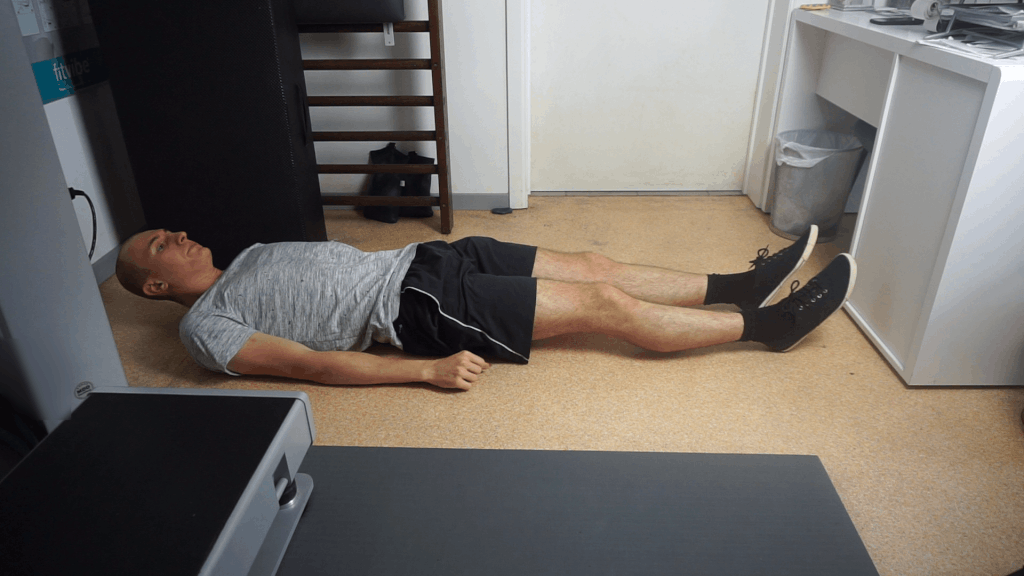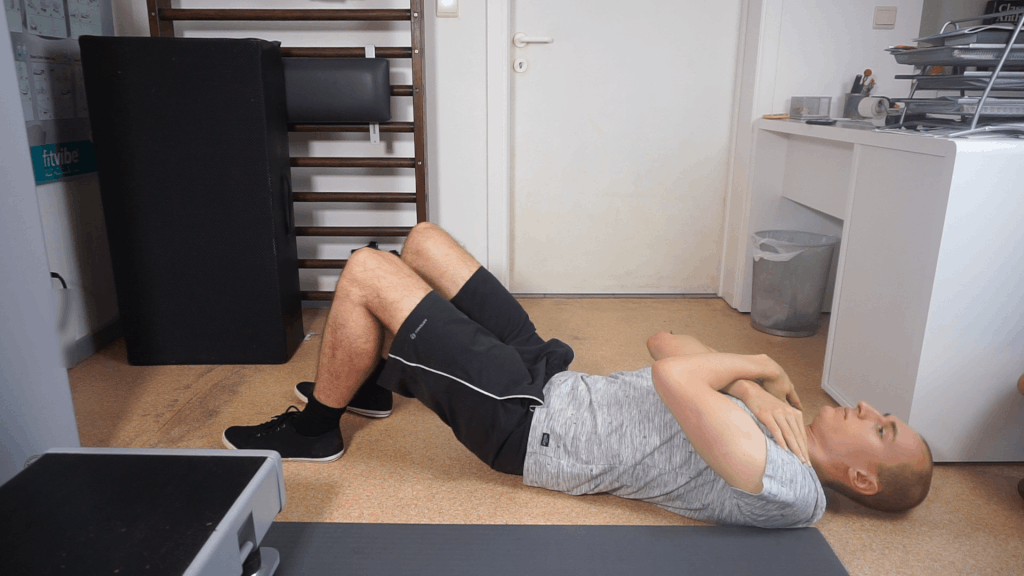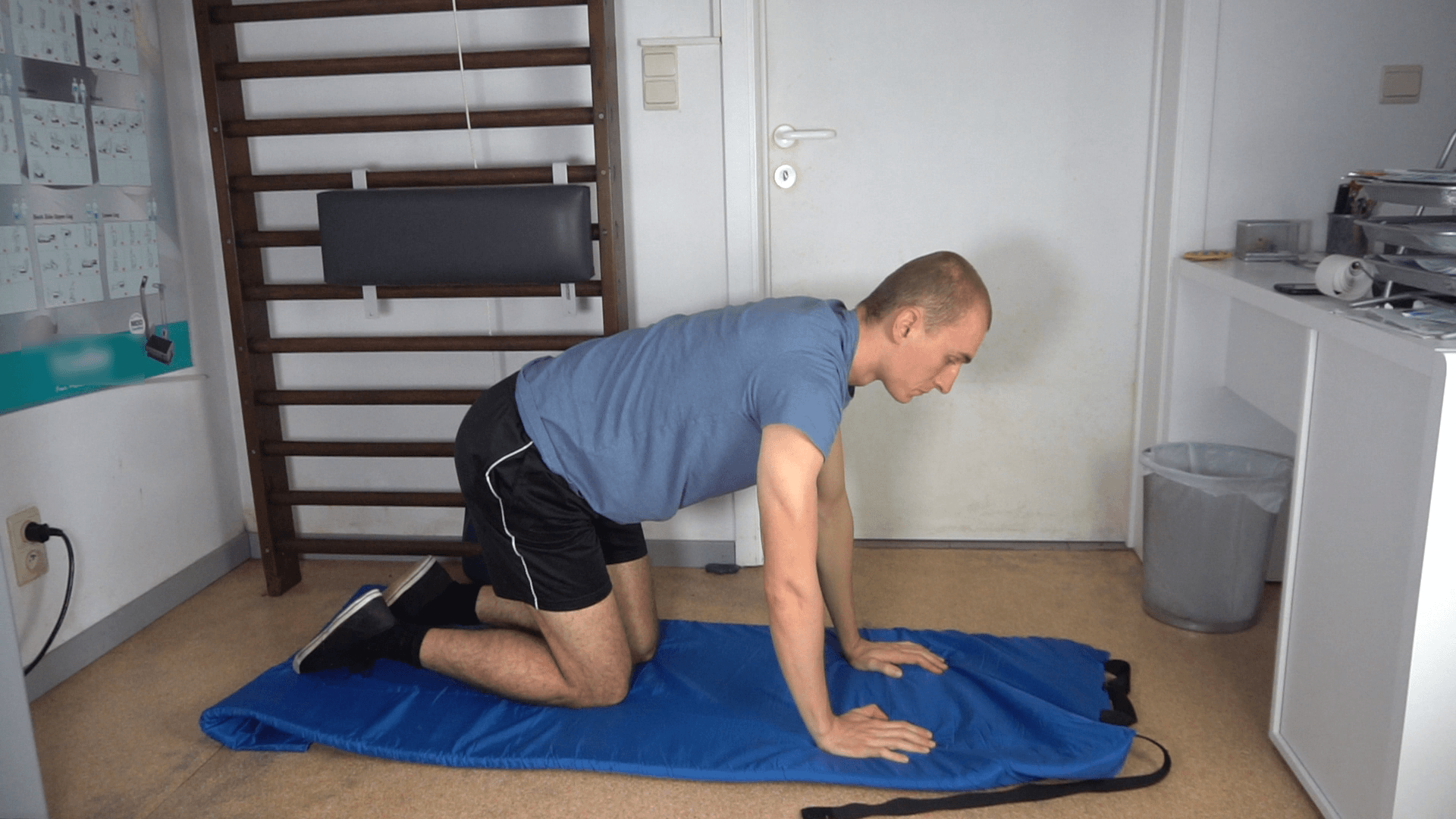Captain’s chair exercises can offer powerful core workouts but you may need at-home-friendly alternatives. Discover a few of these.
The captain’s chair, also known as a knee raise station, is a type of fitness equipment you can describe as an elevated chair without a seat.
This seemingly unusual setup allows you to have your legs free without having to exert too much effort with the rest of your body. Captain’s chair exercises are great for training your core muscles.
Whether you don’t enjoy captain’s chair exercises, your local gym doesn’t have a captain’s chair, you want to work out at home, or you want an alternative for any other reason, there are other options.
You can create a similar setup at home or do at-home exercise alternatives that work similar muscles.
What can you use instead of a captain’s chair?
The captain’s chair is an effective gym machine for training your core muscles. Luckily you can use other pieces of equipment to replicate the same hanging leg position. In turn, this allows you to do many captain’s chair exercises.
The first piece of equipment you can use instead of a captain’s chair is a pull-up bar. One downside of this alternative is that your grip strength may fatigue faster than your core muscles.
If that is the case, it can make more sense to just do ab exercises on the ground.
You also want a sturdy pull-up bar for most captain’s chair exercises. A simple doorway pull-up bar may not be able to handle the shocks if you do the exercises too fast.
The second category of things you can use instead of a captain’s chair is any sturdy setup where you hold yourself up high enough on your two arms. Examples include dip bars, plyo boxes, parallel bars, and even sturdy chairs.
An issue here is again that your arms may fatigue faster than your abs. This second option may also require some extra effort to do in a safe way. For the lower height options you also likely can’t lower your legs entirely.
10 Captain’s chair alternatives at home
Even if you don’t have a captain’s chair available and the equipment alternatives are not right for you, there are many exercises that can serve as an alternative to captain’s chair exercises.
Some of these exercises require some extra equipment. Others you can do with nothing but a suited surface.
1. Lying leg raises
The lying leg raise is an exercise where a small investment in a good yoga mat can really make your workout a lot more comfortable. Take the following steps to do one leg raise:
- Start lying down on your back with your legs stretched and right next to each other on the ground. Your arms start resting on the ground at your sides for balance.
- Keep your legs more or less stretched while you move up your feet slowly until your legs make a right angle with the ground. If this angle is not yet within your capabilities you can start with repetitions with smaller angles and build up from there.
- Slowly lower your feet again while keeping your legs stretched. If you will do more repetitions you can keep your feet hovering just above the ground. If you are done you can lower them to the ground.

Quality ankle weights are especially good for doing leg raises since it is so hard to add other external weights to this exercise in a safe way with other equipment.
If you want to target your obliques more you can also twist your legs at the top of the movement.
2. Kneeling Russian twists
This next exercise allows you to work out a variety of core muscles. Take the following steps to do a kneeling Russian twist:
- Sit on your knees with your hands in front of your chest. If you want to make the exercise more challenging you can hold a weight or two. Tilt your upper body backward until comfortable and at an angle where you can still do the rest of the exercise.
- Slightly twist your upper body to one side and then to the other.
- Return to starting position.
Similar to the regular Russian twist, you don’t want to twist too far. If you have a history of back, neck, or shoulder issues you likely want to skip this exercise.
Compared to the regular Russian twists it is somewhat easier to keep a good posture during the kneeling version.
3. Flutter kicks
Take the following steps to do flutter kicks:
- Start lying down on your back with your legs stretched and right next to each other on the ground. Your arms start resting on the ground at your sides for balance.
- Push your lower back against the ground with the help of your core muscles. The goal is to keep your lower back pushed to the ground throughout the exercise if you want to train your core muscles.
- Keep your legs more or less stretched and together while you move up your feet until your legs make a 90 degree angle with the ground.
- Slowly lower your legs until you either can’t keep your lower back on the ground anymore or until they are right above the ground. The more experienced you are with core training the closer you will be able to get to the ground.
- While keeping the other leg stretched, elevate one leg a small amount.
- While lowering this leg back to starting position elevate the other leg in the same way.
- Keep repeating this alternation between the two sides.

This exercise is similar to the movement you make with your legs while swimming crawl. You can also do flutter kicks while “sitting” in the captain’s chair.
4. Crunches
Crunches are one of the most popular ab exercises out there and for a good reason, they are an effective no-equipment ab exercise you can easily do at home.
One repetition of a crunch involves the following steps:
- You start lying down on your back with your legs bent at the knees and your feet flat on the ground.
- You can place your hands behind your head, cross them over your chest, or put them anywhere else. The point is to not really use your arms or move them during the exercise.
- Raise your head and shoulders from the ground as much as possible while keeping your lower back on the floor. Make sure you don’t use your arms but your ab muscles to do this movement.
- Lower your head and shoulders until you are back in the starting position.

You can describe the crunch more or less as half a sit-up. To build the most muscle mass you want to do about 4 sets of 10-40 crunches depending on how advanced you are.
If regular crunches are too easy for you, you can hold free weights like dumbbells, kettlebells, a medicine ball, or any heavy but compact household object to make them more challenging.
5. Stability ball tucks
A stability ball, also known as an exercise or yoga ball, is a soft elastic ball that can be used for a variety of exercises.
Take the following steps to do a stability ball tuck:
- Start on your hand and knees in front of the stability ball with your feet towards the ball. Keep your arms stretched.
- Put one foot on the stability ball.
- Put your second foot on the stability ball and roll the ball away from you until your legs are stretched and your upper arms are at about a 90-degree angle to the ground.
- Roll the ball toward you by moving your knees toward your chest as far as you comfortably can.
- Roll the ball back into the position of step 3 in a controlled motion.
Stability ball tucks are a challenging exercise for both your core muscles and balance. It is possible that you need to train both of these fitness components with other stability ball core exercises before you can do this exercise.
6. Ab wheel knee roll-outs
The ab wheel is a small piece of fitness equipment that is a wheel with two handles. It may not look like much but ab wheel exercises can offer a great ab workout.
The data from one study even suggests that some ab wheel exercises are an even more effective alternative than more standard exercises like sit-ups and crunches for engaging ab muscles (1).
Take the following steps to do an ab wheel knee roll-out:
- Start with your face facing the floor on your knees and with your hands on the ab wheel.
- Stretch your hips so that your body is in a straight line from your knees to your shoulders.
- Roll forward in a controlled motion, preferably until your stomach is right above the ground.
- Slowly roll back into the position of step 2.
If you are more of a beginner you can start with smaller distances instead of until your stomach is right above the ground.
The knee roll-out is only one option. If you like using the ab wheel there are many other exercises to choose from.
7. Lying toe reaches
The lying toe reach is a simple yet powerful exercise to engage your ab muscles at home without necessarily any equipment. Take the following steps to do a lying toe reach:
- Start lying down on your back with your legs stretched and right next to each other on the ground. Your arms start resting on the ground at your sides for balance.
- Keep your legs more or less stretched while you move up your feet slowly until your legs make a right angle with the ground.
- Stretch out your arms towards your feet and use your ab muscles to raise your upper body and in turn, bring your hands closer to your feet as far as you can.
- Lower your body again in a controlled motion.
While you don’t need equipment for the lying toe reach, holding an extra weight in your hands can help with engaging your ab muscles more.
If you want to focus more on your oblique muscles you can reach out more to the sides instead of straight up.
8. Bird dog crunches
Take the following steps to do a bird dog crunch:
- Start with your face facing the floor with your hands on the ground, your arms stretched, and your knees on the ground.
- Stretch one leg and raise it until it is in a straight line with your body. At the same time stretch the arm of the opposite side and raise it until it is in a straight line with your body. So if you choose your right leg, raise your left arm at the same time.
- Lower the raised leg and raised arm again and move the elbow and knee toward and past each other as far as comfortable.
- Lower the raised leg and raised arm again in a controlled motion to starting position.
- Repeat the same movement with your other leg and your other arm.

The bird dog exercise is an exercise that is mainly done to strengthen core muscles. By doing the crunch alternative you engage core muscles like your obliques even more.
9. Reverse crunches
Take the following steps to do a reverse crunch:
- Lie down on your back with a 90-degree angle in both your hips and knees. Your arms start resting on the ground at 90 degrees out from your shoulders or just next to you for stability.
- Slowly move your knees towards your chest while keeping your hips and knees at 90-degree angles. Your hips and lower back will come off the ground to do this. Stop right before the middle of your back would come off the ground too.
- Lower your lower back, hips, and legs back into starting position in a controlled motion.

Reverse crunches can be a good alternative to more traditional ab exercises like sit-ups and crunches if you have trouble keeping your neck and back straight.
10. Lying leg holds
Take the following steps to do a lying leg hold:
- You start lying down on your back with your legs stretched and right next to each other on the ground. Your arms start resting on the ground at your sides for balance. You can put a weight like a medicine ball on your bottom shins to make the exercise more challenging.
- Raise your legs a small amount so that they hover right above the ground.
- Hold this position or make this exercise more dynamic for more core muscle gains by slowly moving your legs up and down.
The leg hold is also an exercise you can do on the captain’s chair. This is the lying-down alternative.
